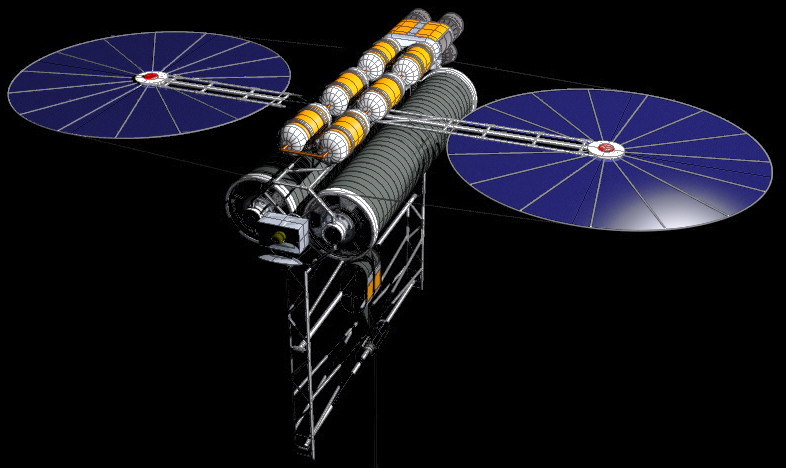
By Lisa Kinoshita
In 2000, I was invited to an award ceremony in Seattle hosted by the Foundation for the Future, a then-new and obscure organization co-founded by a Swiss physicist and inventor, Walter Kistler (1918-2015). Being a stranger to the intersecting worlds of high-tech, science and entertainment, I expected to find a banquet room full of sci-fi geeks celebrating one of their rumpled best. To my chagrin, the recipient turned out to be the great biologist and social theorist, Edward O. Wilson, and the prize was $100,000, plus a 200-gram medallion made of solid gold.
The Foundation for the Future is just one of a slew of under-the-radar, Seattle-area brain trusts and high-tech companies investing in high-stakes, future-based research that purports to change the course of science (and by extension, humanity). While Google, SpaceX and Virgin Galactic grab headlines in a battle-of-the-billionaires’ race to commercialize outer space, serious research is going on right in our own backyard. The creator of a new Artscapes installation, and president of the LiftPort Group, Michael Laine, shares an insider’s perspective.
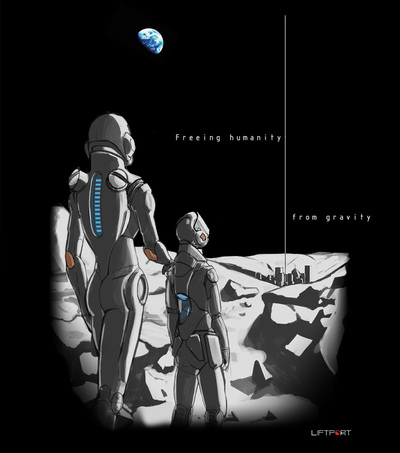
Space Elevator Concept Portfolio by the LiftPort Group is a new video installation at the Tollbooth Gallery at Broadway and South 11th St. An aged, outdoor kiosk, the Tollbooth could be a prop from Bladerunner 2049; a small, weather-beaten paybooth with tinny audio and a tiny screen. LiftPort’s concept drawings randomly taped to the exterior of the booth add to the appearance of a relic from the future. But lean in closer, and beautiful, spectral, scientific illustrations of the Space Elevator float into view onscreen.
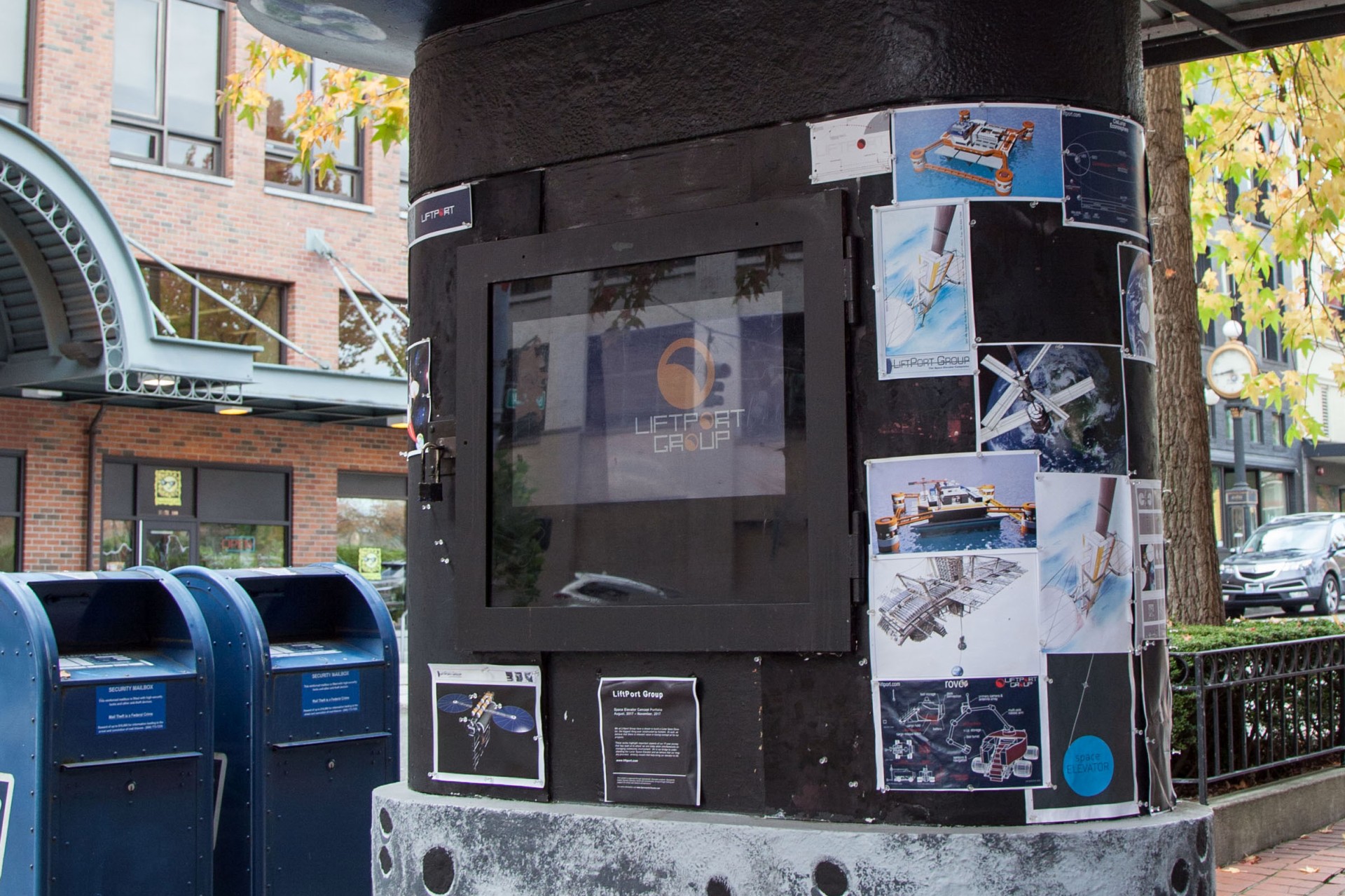
It was this mesmerizing animation that prompted me to visit Laine at his office on the top floor of the grand old post office building downtown on A St. Riding the elevator I got an odd feeling of déja vu…LiftPort sounded like a pseudo-scientific handle…Would he be an eccentric, an illustrator, a high-tech entrepreneur? Laine is, in fact, an advanced-design engineer whose concept for an “elevator on the moon” has been in the works for 14 years. Research for the Space Elevator received early support from NASA; and, as he showed me, reams of press coverage from publications including Newsweek, The Economist, Popular Science and Fortune.
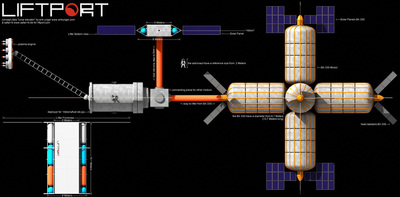
“LiftPort started in 2003 and is dedicated to both of the ideas that it is possible to build a Lunar Elevator with current technology and that it will be vastly transformative for humanity,” says the company website. “It is our goal to build a Lunar Elevator on the Moon in order to improve life here on Earth and make it easier to access the Moon, asteroids and Mars.” I’m no rocket scientist, but in simplest terms, the futuristic vehicle’s purpose is to move cargo from a zero-gravity space station to the moon. It will do this via a cable anchored to the surface of the moon on one end, and held taut by a dense counterweight (within Earth’s gravitational pull) on the other. By ziplining cargo from the dock instead of using rockets, the design would cut the cost of space-to-moon transport by up to 90%, says Laine. The scientific groundwork is in place, and with funding and research, he speculates such a vehicle could be feasible in 8-12 years. With foresight and planning, the type of manufacturing it requires might even benefit Tacoma, but more on that later.
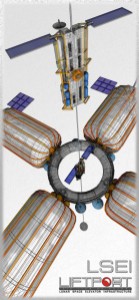
Laine is publishing a book about the Space Elevator in November. “Today we are beginning the process of commercializing the intellectual property we have developed over the last 14 years,” he writes. The company is also pursuing funding and international alliances with educational, science and technology institutes. He says there are currently nine billionaires in the Puget Sound area investing at least $100 million each to commercial space research; Planetary Resources in Redmond, he says, is already doing asteroid mining. It’s heady and disorienting to think about. His research assistant, Jeremy Wain Hirschberg, says, “The difference between us and companies like [Elon Musk’s SpaceX] is they have billionaire patrons. [But] our system augments what they do, and vice versa.”
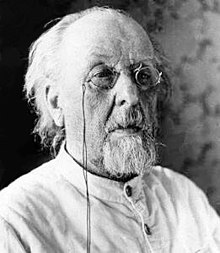
Константи́н Эдуа́рдович Циолко́вский
So what is the benefit of space research? “Going to outer space has raised the living standard of every human being,” says Laine, whose imagination as a youth was stirred by Jules Verne and Russian rocketry scientist Konstantin Tsiolkovsky. “The U.S. is going back to the moon in a pretty significant way. Google is giving $30 million to someone who can go to the moon and send back video. [Vice-president] Pence has made the moon a national target.”
Hirschberg explains that space technology actually inundates our modern lives, having trickled down into the development of such everyday items as memory-foam mattresses, Air Jordan platforms and cardiac pacemakers. “We can package ourselves as a technology incubator in eight different science fields with products we can commercialize,” says the recent graduate of University of Puget Sound. His father is a University of Washington-Tacoma professor and co-founder of rainincubator.org, a non-profit research accelerator and incubator supporting local entrepreneurship and startups in the life sciences.
Over the course of a long conversation, sci-fi fantasies are becoming almost tangible, and real.
Which brings us back down to Earth, in Tacoma. “We’re in the city of destiny,” says Laine – a city with several high school, vocational and advanced educational institutes with special programs in the sciences (not to mention proximity to Seattle high-tech, and Boeing). “There’s a lot of native talent in the electronics field,” he notes. Could STEM (science, technology, engineering, math) industries of the future be seeded right here? For example, he says, there are 1,400 satellites spinning around Earth right now, with 11,000 projected in the next five years. “There’s no production-line satellite company in the world, so why not take the assets that we’ve got and develop that?
Art also plays a role in the science of the future, including those beautiful scientific drawings at the Tollbooth Gallery. “Art is a bridge,” says Laine. “We use the art as a bridge to understanding. The art helps translate the math.” Hence, the role of scientific illustrators and staff artists. We gently shuffle through a stack of precise illustrations drawn in the inky blacks and purples of deep space. They are as exquisite, in their way, as the scientific drawings of Leonardo da Vinci. Laine goes so far as to suggest changing the STEM acronym to STEAM, so as to include art.
Hirschberg talks about space travel as naturally as driving a car; he is young and grew up on the stuff, his ideas are buoyant and without inhibition. Expounding on the mission of space technology, he says, “It’s almost like the Star Trek idea of expanding our influence. It’s comparable to the discovery of the New World without all the disease, overpopulation, depletion of resources, and war that went with it….It’s that manifest idea of expanding – that’s what people do.”
LiftPort Group / Space Elevator Concept Portfolio at the Tollbooth Gallery, Broadway & 11th through November 2017. www.liftport.com
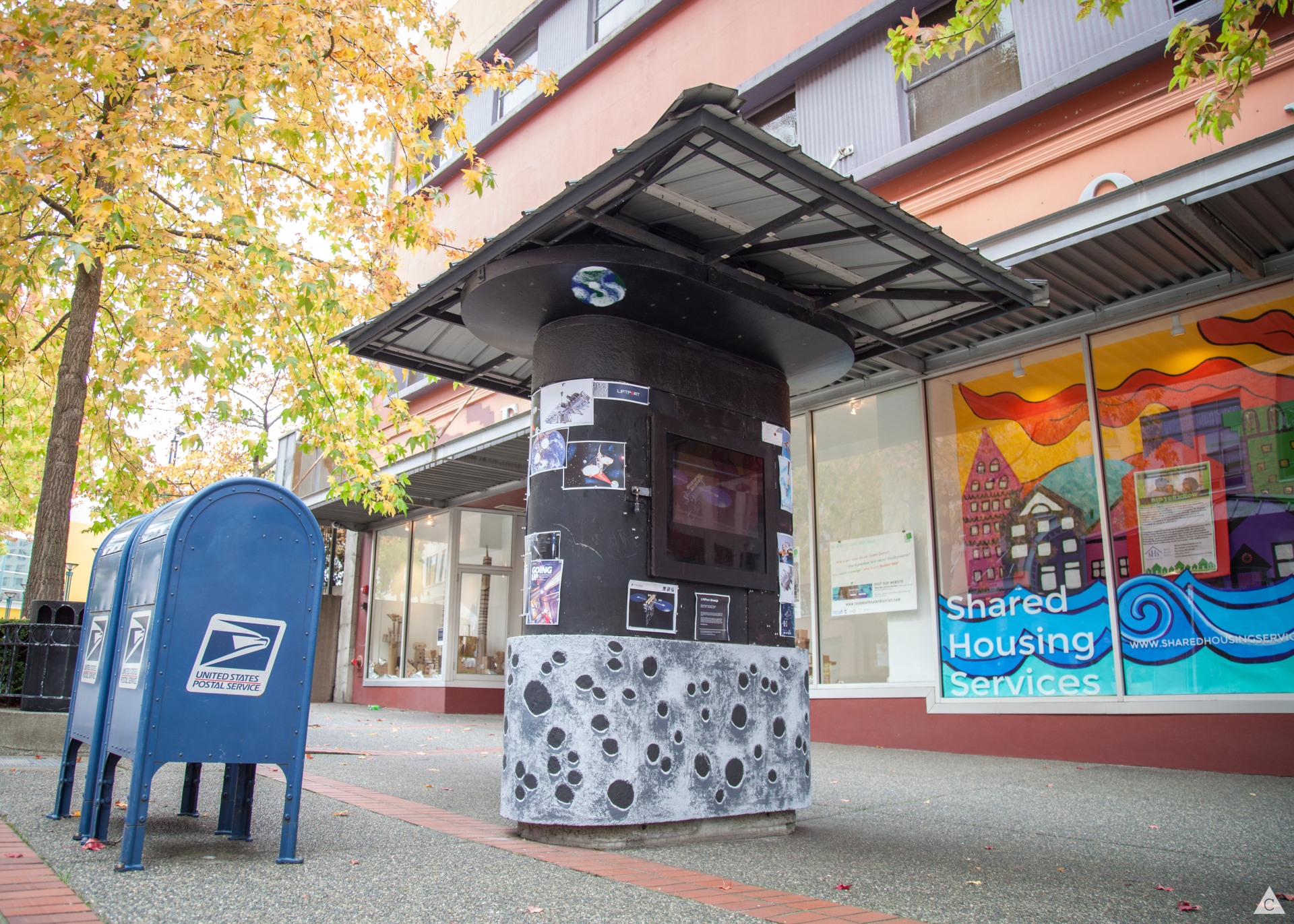
You must be logged in to post a comment.